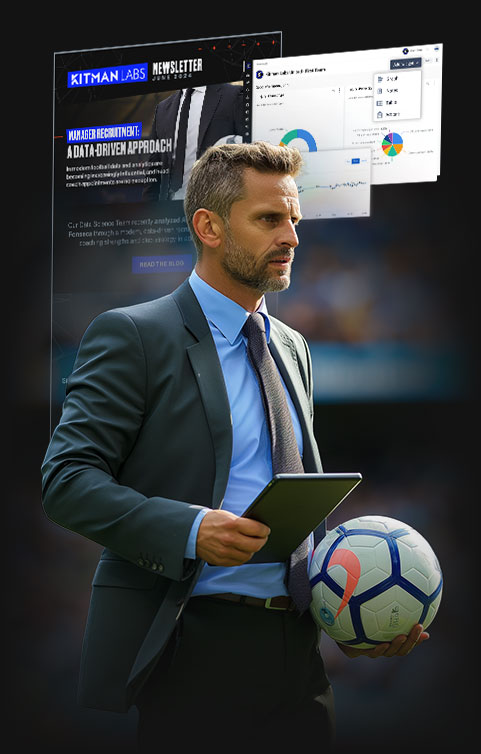Momentarily stunned and disoriented. That’s what I remember after getting knocked out when playing professional rugby for the Leicester Tigers. That incident happened over ten years ago, and at the time, I felt great pressure—not from the club, but from myself personally—to play the following week in a high-stakes game.
But what I didn’t understand then is how serious a head injury can be.
One of the biggest hurdles teams face today is reshaping the “culture” around concussions. From a player perspective, the challenge is getting athletes to take responsibility for their own bodies by having the education on signs and symptoms and the discipline to self-report. All too often, athletes feel “invincible” and there’s a tendency to downplay injuries so as not to let the team down.
Concussion Protocols: Where Are We Today?
Contact sports that are more prone to concussions—American football, rugby union, rugby league, boxing, mixed martial arts—have robust protocols in place and are leading the charge for return-to-play protocols.
While some protocols exist, the guidance around concussions is not as advanced as other injury return-to-play protocols. For one thing, it’s difficult to build a framework around an ever-changing problem because not enough is understood about patient symptomatology, which can change rapidly over extended periods of time.
- How do I assess and diagnose a concussion?
- What if there are multiple concussions?
- How do I know if someone is getting better or worse after each incident?
- When is it safe to return to play?
And many teams don’t spend enough time on this topic because player symptoms eventually subside and it’s on to the next problem.
Perhaps most important though, concussions continue to be a taboo subject. While players can’t hide a physical injury like a dislocated shoulder, they can conceal a concussion and it’s very hard to treat a concussion if no one will talk about it. This requires a change in the sports industry via more education, a shift in social norms, and standardized protocols.
Start with Education, Baseline Testing
When I suffered my first concussion, my level of education around this topic was poor. And as an athlete, I never wanted to say, “I’m not good to play.” I wish someone had helped me understand the gravity of the situation and explained it to me in terms of the bigger picture not only for the future of my athletic career, but also long-term health implications.
Ego can be one of the reasons players get hurt. If sports psychologists educated players about emotional intelligence, players would better understand their emotions and ego and realize these are natural reactions when injuries happen in high-stress environments.
Continuing education is critical for everyone—from coaches and medical, to athletic trainers and players. Everyone needs to be able to recognize, report, and treat concussions in a collaborative and aligned way to ensure mutual outcomes. For collegiate athletes, reshaping the culture around concussions also includes the support of university faculty.
Tests for On and Off the Pitch
In addition to spotters or doctors making immediate assessments on the pitch, there are many tests that can be used to diagnose a concussion. Here are a few common ones, ranging from simple and practical to very detailed assessments:
- SCAT – tests mental acuity by comparing to previous baseline assessment
- ImPACT – computer- based cognitive test
- King-Devick – tests eye recognition, visualization and immediate recall
- 9-hole peg test – measures finger dexterity (motor control)
- Balance test – checks stability and control
- Blood biomarkers – help to detect concussion symptoms
While we have all these tools, there’s still more to be done. In the future, an ideal test for concussions could be a simple COVID-like test that swabs your saliva or blood and gives an immediate “yes” or “no” answer. The good news is that research into MicroRNAs is already happening to make things like this a reality.
Managing Return-to-Play
Concussion protocols are often set by the sporting governing body involved. However, some clubs choose to go one step further by conducting research that will help them better look after their players. For example, the Irish Rugby Football Union is partnering with universities and using accelerometers and high-tech gumshields to monitor and measure the acceleration, direction, and rotation of head impacts to provide guidance on whether to remove a player from the game or determine return-to-training/-play or -play protocols.
This type of state-of-the-art research is helping to make the game safer and puts pressure on governing bodies to do more—whether it’s additional research or funding for clubs to do their own added research.
A Holistic Approach to Athlete Care
While at Kitman Labs, I’ve been able to grow as a practitioner by observing best practices across global sport—from cricket and rugby to football and American football. One of the things we embrace is a holistic model of player health and welfare, which looks beyond the game at things like diet and emotional well-being.
Mental health is particularly important because concussions affect an athlete’s playing ability which can lead to stress, anxiety, and depression. Holistic care could include things like flotation tanks or meditation to relax players.
What You Can Do to Change the Culture
Before all else, we need more funding for research. While there’s a lot of good work going on now, I’d like to see more concussion research focused on the athlete: How can we help them? How does it influence their return to play? How does it impact them as a person? And how can we identify players who are at greater risk of injury and take preemptive action?
The most important thing you can do is help to spread awareness. Talk freely about the topic, educate others if you hear misinformation, and be supportive of those you think may be suffering from concussion symptoms. We encourage you to check out the many educational resources and opportunities to get involved on the National Concussion Awareness Day, NCAA concussion, and CDC sites, and to share this blog with others.
This blog is part of an ongoing series where we share valuable insights from our team of Performance Experts. Read our previous blog on this topic titled Concussion Awareness is the First Step Towards Safer Sport.
To learn more about how analytics can assist with sport-related injuries, contact us today at science@kitmanlabs.com.





